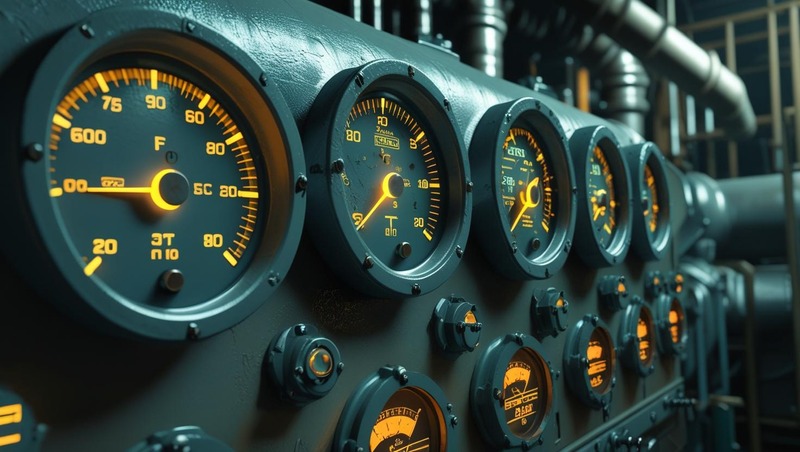The industrial level gauges market is entering a phase of robust growth, driven by accelerating trends in smart manufacturing and digital transformation. Once predominately mechanical and analog in nature, level gauges are increasingly evolving into intelligent devices capable of real-time monitoring, diagnostics, and integration with broader industrial control systems. This shift is unlocking new opportunities across sectors such as oil & gas, water treatment, chemicals, power generation, and pharmaceuticals, all seeking greater efficiency, safety, and operational clarity.
Innovations in sensor technology are revolutionizing level measurement. Non-contact approaches like radar and ultrasonic gauges are gaining prominence due to their accuracy, reliability, and suitability for harsh environments. Unlike traditional contact-based methods that risk contamination, corrosion, or mechanical wear, these advanced sensors provide precise measurements across a wide range of media, including volatile and corrosive liquids. This not only improves performance but also reduces maintenance burdens and enhances safety—a critical advantage in regulated industrial settings.
Download PDF Brochure @ https://www.marketsandmarkets.com/pdfdownloadNew.asp?id=926

Integration with the Industrial Internet of Things (IIoT) is a key catalyst fueling market expansion. Smart gauges now feature embedded connectivity, feeding real-time data into SCADA and cloud-based platforms for remote monitoring and analysis. These capabilities empower process operators with predictive maintenance insights, helping prevent equipment failures before they occur. As a result, facilities experience reduced downtime and improved asset utilization—driving operational excellence and cost savings.
Wireless communication further amplifies the appeal of level gauges, especially for installations in remote or hazardous zones. Eliminating extensive cabling lowers installation costs and enhances flexibility in layout, even enabling temporary deployments. With wireless protocols like LoRaWAN and NB‑IoT, level gauges can transmit critical data over long distances with minimal energy requirements—a key enabler for expansive industrial sites or inaccessible tanks.
Manufacturers are also pushing the boundaries in device intelligence. Modern gauges offer self-diagnostic features, adaptive calibration, touchscreen interfaces, and alarm systems. These enhancements streamline diagnostics, increase usability, and provide early alerts when measurements deviate from expected norms. They also support modular and customizable designs, allowing deployments to be tailored to unique operational requirements.
From a market perspective, size and growth projections remain strong. The global level gauge segment was valued at approximately USD 1.45 billion in 2023, with a forecast CAGR of over 4 percent through 2032—expected to reach USD 2.14 billion. Industrial gauges, in particular, benefit from automation initiatives, regulatory demands for safety, and a growing focus on data-driven operations. North America holds significant market share, propelled by its advanced manufacturing base and stringent compliance standards.
Key end markets underscore this trajectory. In oil & gas, water & wastewater, chemicals, and power generation, reliable level measurement is essential for process control, safety, and resource management. Across these industries, intelligent level gauges contribute to enhanced regulatory compliance, reduced environmental risk, and improved operational efficiency.
However, the market is not without obstacles. Advanced smart gauges come with higher upfront costs and may require periodic calibration and maintenance to ensure accuracy. Smaller businesses or cost-conscious producers may resist adoption, particularly if simpler devices suffice. Additionally, competition from alternative sensing solutions—such as pressure-based or capacitive sensors—may limit penetration in cost-sensitive sectors.
Nevertheless, sustainability and digitalization mandates continue to drive demand for connected, accurate, and intelligent level measurement tools. As energy efficiency, environmental oversight, and asset health maintenance become non-negotiable, smart gauges are positioned as critical enablers of responsible and automated industrial operations. The future of the level gauge market is therefore firmly linked to broader trends in Industry 4.0, IIoT, and next-gen manufacturing—where real-time insight and intelligent control are transforming industrial performance.
In summary, industrial level gauges are moving beyond simple measurement instruments to become central components of smart monitoring systems. Fueled by non-contact sensing, wireless connectivity, and IIoT integration, the market is poised for strong expansion. While investment costs and calibration demands present manageable challenges, the long-term advantages in efficiency, safety, and compliance make a compelling case. As digital transformation reshapes industry, intelligent level gauges will continue to drive real-time visibility and smarter process control—cementing their relevance in the next industrial era.
